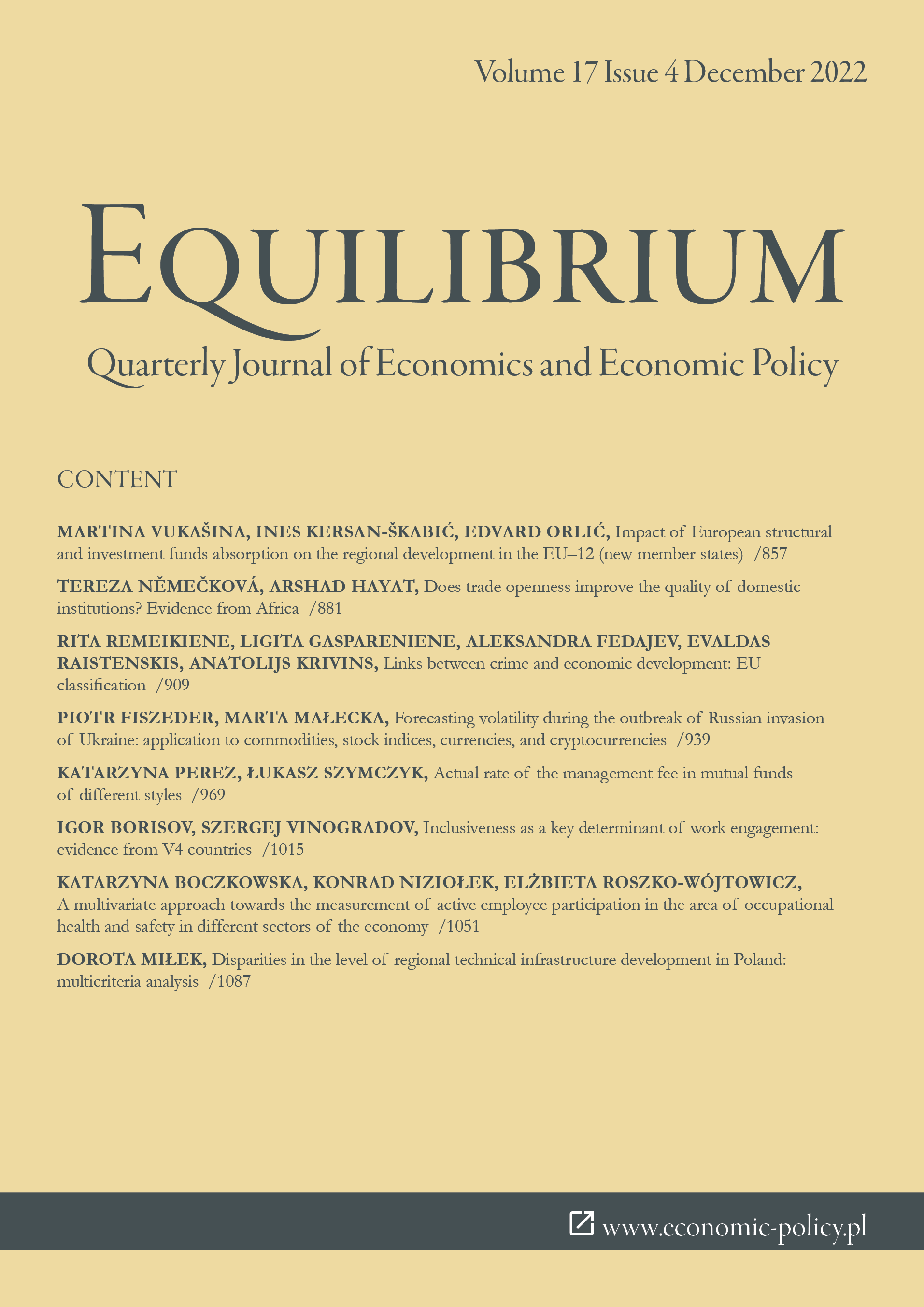Impact of European structural and investment funds absorption on the regional development in the EU-12 (new member states)
Impact of European structural and investment funds absorption on the regional development in the EU-12 (new member states)
Author(s): Martina Vukašina, Ines Kersan-Škabić, Edvard OrlićSubject(s): EU-Accession / EU-DEvelopment
Published by: Instytut Badań Gospodarczych
Keywords: regional development; ESIFs; panel data analysis; new member states;
Summary/Abstract: Research background: European Structural and Investment Funds (ESIF) as the main instruments of cohesion policy (CP) in the EU, provide a broad source of financing opportunities for the EU member states. The biggest amount in the CP budget is oriented to convergence NUTS 2 regions that have GDP p.c. below 75% of the EU average. The new members of the EU (accessed in 2004 and 2007) had available 176.3 billion EUR in the period 2007?2013 and 217 billion EUR in the period 2014?2020. Even the absorption rate (in 2007?2013) of available ESIFs is high (above 90%), the real implications on their economies don?t come automatically and they represent the area for examination. Purpose of the article: The research aims to analyse the impact of ESIFs absorption in EU new member states in the period 2008?2016 on their GDP p.c. Methods: As the sample has time and cross-sectional dimension, the panel data in static and dynamic form is employed. The analysis covers the major part of the financial framework 2007?2013 and a part of financial perspective 2014?2020 (depending on the available data). Findings & value added: The results indicate that increase in ESIF p.c. for 1% will contribute to the GDP p.c. increase for 0.0053 to 0.0064 % (static model) and for 0.008% (dynamic model). Although the impact of ESIFs is significant and positive, it is quite (and unexpectedly) small, and consequently new EU member states should not rely too much on them as the source of economic progress. It is necessary that countries should focus on channeling funds into specific segments (sectors, policies) that will result in increased competitiveness of their economies. The contributions lie in creating GDP p.c. determination function; in including all new EU member states; in including more recent available data and by observing ESIFs as a part of growth model.
Journal: Equilibrium. Quarterly Journal of Economics and Economic Policy
- Issue Year: 17/2022
- Issue No: 4
- Page Range: 857-880
- Page Count: 24
- Language: English

